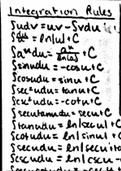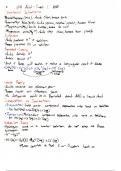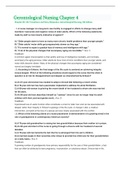BLOQUE 1
“THE LADY OF SHALOTT”
CONTEXTO EXTERNO: siglo XIX; sociedad victoriana. Modelo de feminidad basado en la domes8cidad, la
maternidad, la pasividad y el recato. No se esperaba que la mujer se dedicara a lo intelectual. “Enfermedades
femeninas (histeria)”.
TEMAS RECURRENTES EN LA ESCRITURA FEMENINA: encierro, malestar Zsico y mental, insa8sfacción.
“MADWOMAN”: conflicto entre la prisión domés8ca y la fuerza crea8va. Representan la angus8a de la mujer que
no encuentra modo de conciliar sus deseos sexuales y ar`s8cos con las imposiciones del género norma8vo.
LA DAMA DE SHALOTT: encarna la invalidez que el orden victoriano esperaba y alentada en la mujer. Invisible,
desconectada del mundo exterior por el agua que la rodea y los muros de la torre, simbólicamente elevada al
ideal sin nada que decir, en contacto con personas y acontecimientos gracias a información de segunda mano que
le proporciona el espejo. Es al 8empo inocente e inofensiva.
CONTEXTO INTERNO: ámbito medieval, ciclo artúrico. La dama queda bien definida por el orden narra8vo de los
textos caballerescos, en los que las mujeres reforzaban la ac8vidad masculina con su propia pasividad.
MALDICIÓN QUE IMPIDE A LA MUJER MIRAR DIRECTAMENTE A CAMELOT: extensión de las advertencias sobre el
peligro del espacio público con las que se jus8ficaba la reclusión de la mujer y su dedicación a labores domés8cas
y familiares.
PARTE I. El poema comienza con una descripción de un río y una carretera que pasa a través de largos campos de
cebada y centeno (barley and rye) antes de llegar a la ciudad de Camelot. La gente, a lo largo del recorrido, por el
camino, mira hacia una isla llamada Shalod , que se encuentra más abajo, en el río. La isla de Shalod está llena de
plantas y flores , incluyendo lirios, álamos y sauces (lilies, aspens and willows). En la isla, una mujer conocida como
la Dama de Shalod está encarcelada dentro de un lugar con “four gray walls and four gray towers.”
Tanto “heavy barges” como “light open boats" navegan por la orilla del río cercano a Camelot. ¿Alguien sabía de la
señora que vivía en la isla? Sólo los segadores que cosechan la cebada escuchan el eco de su canto. Por la noche,
el segador cansado escucha su canto y le susurra: “‘Tis the fairy Lady of Shalod”
Lines 1-9. This poem starts off by giving a visual overview of the situa8on. A river, long fields and a road are shown
to the reader and, far in the distance, the island of Camelot. Common people are men8oned, but no specific
iden88es are given. They just go about their daily business.
Lines 10-18. The imagery here is of nature, freedom, movement. This is contrasted with the descrip8on of the
walls and towers of Camelot in line 15. The flowers men8oned in line 16 are seen as if they were held prisoners.
This tone of severity in the middle of nature’s healthy ac8vity prepares the reader for the introduc8on of The Lady
of Shallot, in line 18.
Lines 19-27. Lines 19-23 focuses again on the human ac8vity going around the island: small river barges pass with
heavy loads; small, quick boats called “shallops” skim past the shore around the tower, referred to here as a
“margin”. With all of this ac8vity, the poem asks who has seen the woman who lives in the tower, implying that
she is mysterious, unknown, “veiled”.
1
, BLOQUE 1
Lines 28-36. In the fourth stanza of Sec8on I, the imagery changes from relying on the senses of sight and touch
(as implied by the plants' mo8ons in the wind in stanza 2) to the sense of sound. The poem tells us that the lady
who lives in the tower has not been seen, and is known only to the farmers who hear her singing while they work
in their fields so early in the morning that the moon is s8ll out. Because they never see her but only hear her
singing, the reapers think of the Lady of Shalod as a spirit, a "fairy." Up to this point, the reader has not been
introduced to her, either, and knows only as much about her as those outside of the tower know.
PARTE II. La Dama de Shalod teje un con un mágico colorido. Ha oído, como en un susurro, le comunican que una
maldición caerá sobre ella si mira hacia Camelot, pero no sabe en qué consiste. Por eso ella se concentra
únicamente en su tejido, sin levantar la vista.
Mientras teje, 8ene frente a ella un espejo. Ve “shadows of the world”: un camino, los campos, los remolinos del
río y los campesinos de la ciudad. A veces también ve damiselas, un abad (abbot), un pastor o un escaparate de
ves8dos carmesí. También mira a un par de caballeros. Disfruta de su tejido solitario, aunque expresa su
frustración con el mundo de las sombras cuando vislumbra un cortejo fúnebre o un par de recién casados en el
espejo.
Lines 37-45. The Lady seems to be happy where she is: her songs echo "cheerly" (line 30) and she weaves her
picture in happy, gay colors (line 38) and she has no care in the world other than weaving (line 44). In this stanza,
though, the reader finds out that the Lady will have a curse visited on her if she looks at Camelot. This idea
combines many familiar themes: readers generally recognize the maiden trapped in the tower from the tale of
Rapunzel or the maiden placed under a spell from the story of Sleeping Beauty; in addi8on, according to Greek
myth, Penelope, the wife of Ulysses, avoided men who wanted to court her while her husband was away by
constantly weaving, but then unravelling her work at night so that she would never be done. This is an appropriate
allusion because both Penelope and the Lady of Shalod use their crar as a subs8tute for human involvement.
Strangely, the Lady does not know why she has to avoid direct interac8on, nor does she seem to care.
Lines 46-54. Not able to look directly at the world out of her window, the Lady observes it through a mirror. This
stanza describes a few of the things she sees in that mirror. The images she sees are described as “shadows."
According to the Greek philosopher Plato we experience life like a person would who was chained up inside of the
mouth of a cave: he cannot see out, he can only see the shadows of people passing the cave flickering on the wall,
and he thinks that the shadows are reality. In that same way we all, according to Plato, mistake images of reality
for actual reality, which we cannot see. For the Lady of Shalod, reality is not the broad landscape but the images
(Tennyson calls them "shadows") she sees in the mirror.
Lines 55-63. The people in this stanza are in mo8on, going about their busy lives while hers is solitary and sta8c.
Reflected in her mirror she sees a group of happy girls, a clergyman, a page, and, some8mes, the knights of
Camelot, riding in columns.
Lines 64-72. The ac8on of the poem begins in this stanza, where the Lady's attude changes: in line 55, she is
delighted with the picture she is weaving of the outside world, but in line 71, the first 8me she speaks, she says
she is unhappy with her situa8on. In between the two, she observes people par8cipa8ng in events—a funeral is
men8oned first, then a wedding—that make her aware of how lonely it is to be unable to par8cipate.
2
, BLOQUE 1
PARTE III. Un caballero en armadura de bronce (“brazen greaves”) viene a caballo por los campos de cebada
cercanos a Shalod, el sol brilla en su armadura. Cuando monta, las gemas de las bridas brillan como una
constelación. El caballero lleva una corneta colgaday sus armas hacen ruidos al cabalgar cerca de la isla.
En el “blue, unclouded weather”, las joyas de la silla de montar brillan, lo que hace que se vean como un meteoro
en el cielo púrpura. Su frente brilla con el sol, y su pelo rizado negro fluye de debajo de su casco. Al pasar por el
río, su imagen parpadea en el espejo de la Lady, cuando él canta " 8rra lirra". Al ver y escuchar a este caballero , la
Señora para de tejer y abandona su telar. La tela se sale del telar, el espejo se agrieta y la Dama anuncia la llegada
de su condena: “The curse is come upon me”.
Lines 73-81. The image of Sir Lancelot shoots into the Lady's mirror with the force of an arrow fired from the roof
just outside of her bedroom window. The descrip8on that Tennyson gives of the knight mixes his bold, powerful
look with his chivalrous ac8ons. Sunlight glints on his shiny armor, making him look as if he is on fire, and the
speaker of the poem also tells us that he is the type of knight who always, even if dressed for badle, took 8me to
kneel when he encountered a lady. His knighthood confirms that he is a man of the highest honor and nobility.
Lines 82-90. This second stanza of Sec8on III shirs the descrip8on of Lancelot from the visual to the audible. The
bells of his bridle ring "merrily" as he rides, his armor rings as well, and in his equipment belt, the "baldric," is a
"mighty bugle"; the musical notes of which communicate the situa8on at hand.
Lines 91-99. This stanza, in which Sir Lancelot is likened to a meteor, glowing as if he were on fire, splendid in his
armor and "trailing light," serves to emphasize what an impressive sight he was as he rode toward Camelot.
Lines 100-108. Arer the intricate descrip8on that the reader has been given of Lancelot, it is in this stanza, in line
106, that the Lady is able to see him for the first 8me. Tennyson says that he "flashed into the crystal mirror,"
which is fitng because his shining armor seems to flash everywhere he goes, but it is especially appropriate
because the Lady earlier referred to the images in her mirror as "shadows" (line 71), which are of course dark and
dull. Also of significance is that Sir Lancelot sings. The immediate cause of the Lady's adrac8on to him, the thing
that prompts her to look out of the window, is not visual, but audible; here Tennyson suggests the fullness of life
that the Lady cannot avoid any longer. Lancelot sings a tradi8onal folk refrain, which would be historically accurate
and would invoke a sense of nostalgia in readers of Tennyson's 8me.
Lines 109-117. Although it is Sir Lancelot's singing that makes the Lady tempt fate by going to the window and
looking out, she never actually sees him, just his helmet and the feather upon it. The irony of this is buried,
however, within the rush of mys8cal occurrences which indicate that the curse the Lady men8oned in line 40 is
indeed real: the mirror cracks, the tapestry unravels.
This could also be given a psychological interpreta8on, with the events that are presented as "actually" happening
being explained as symbols of what is going on in the Lady’s head: in this interpreta8on, the moment the woman
becomes involved in the outside world her sense of self (the mirror) and of her accomplishments (the tapestry)
comes apart, as if social interac8on is a curse to the ego.
3











